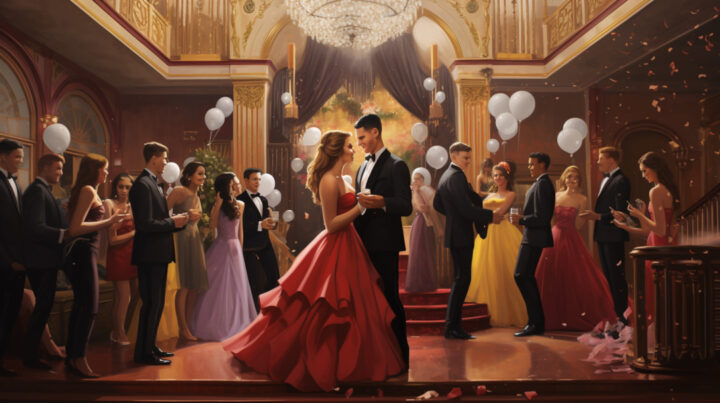
Prom, a quintessential rite of passage for American teenagers, has a history that dates back to the 19th century. But what are its origins, and how did it evolve into the grand event we know today?
From Promenade to Prom The term “prom” is derived from “promenade,” a French word that means a walk or stroll. This term dates back to the 16th century and was used to refer to places for strolling, such as ship decks or public walkways. By the 19th century, “promenade” was associated with events, particularly concerts in Europe where guests could walk around while enjoying the music. In the U.S., the term became linked with dance, either as a ballet term or as a form of partner dance in Western and country traditions. The act of parading guests into a ballroom before formal events was also referred to as a promenade, which many believe led to the American prom tradition.
Origins at the University Level Interestingly, the prom tradition began not at the high school level but at the university level, drawing inspiration from debutante ball culture. The Oxford English Dictionary points to the Ivy League tradition of a “presentation week,” where formal dress and dancing accompanied a promenade concert. An 1879 issue of the Harvard Crimson even mentioned the term in relation to a “class prom.”
Prom’s Evolution to High Schools While prom may have started as an event for elite university students, it expanded to high schools by the early 20th century. However, it wasn’t always inclusive. Due to Jim Crow-era practices and educational inequality, many teens of color were excluded. The 1950s saw prom culture flourish, especially among white students, thanks to the post-World War II economic boom.
Prom’s Racial and Social Challenges Prom’s history is not without its challenges. After the Brown vs. Board of Education decision in 1954, white schools in the south tried to undermine the ruling that prohibited racial segregation in schools. As a result, many schools began holding two separate proms: one for white students and another for Black students. This practice continued in some places well into the 21st century. Additionally, prom has faced issues related to LGBTQ rights, gender norms, and more.
Prom in Popular Culture Prom has been a popular subject in media, especially in teen movies like “Pretty in Pink” and “Mean Girls.” Over the years, prom has evolved, reflecting societal changes and challenges, from racial integration to LGBTQ rights and more.
Conclusion Prom, while an old tradition, continues to evolve with changing societal norms and youth culture. It serves as a reflection of the times, capturing both the joys and challenges faced by each generation.
Sources:Wikipedia, History.com & HuffPost.
